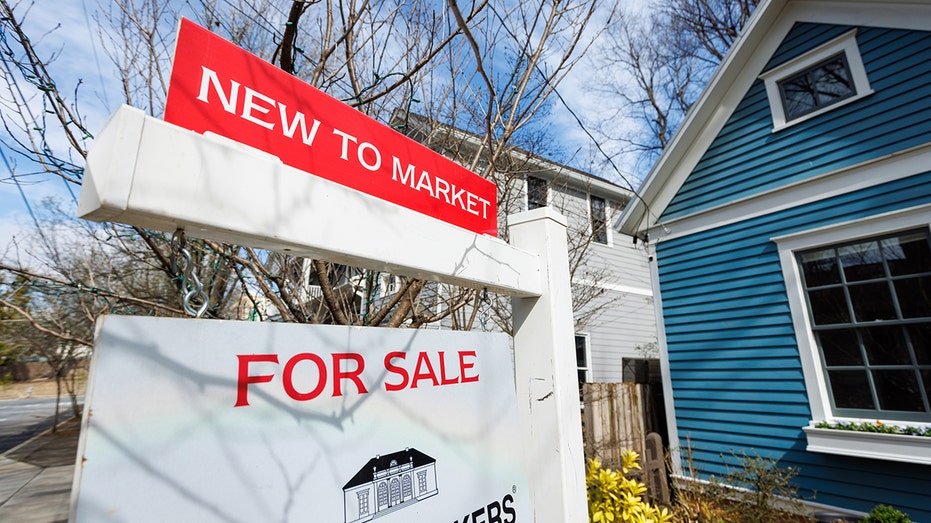Mortgage rates post big decline amid Silicon Valley Bank fallout
Shifting Fed rate hike bets send mortgage rates tumbling to one-month low
Real estate market 'paused' waiting for mortgage rates to subside: Lovallo
UBS U.S. homebuilders and building products analyst John Lovallo discusses whether housing has entered a recession after home search activity on Google plunged in November on "Varney & Co."
Mortgage rates fell sharply on Monday as the stunning collapse of Silicon Valley Bank triggered fears of a broader banking meltdown.
The average rate on a 30-year fixed mortgage dropped to 6.57%, according to Mortgage News Daily, down from 6.76% on Monday and a high of 7.05% last Wednesday.
Mortgage rates track the yield on 10-year Treasury bonds, which fell on Monday to the lowest level since early February. Treasury yields are heavily influenced by actions either taken or telegraphed by the Federal Reserve. When Treasury yields fall, so do mortgage rates.
Following the bank failure on Friday, Wall Street is now betting that the Fed will pause its aggressive interest-rate hike campaign when it meets next week. The probability that the Fed pauses its rate-hike campaign next week rose to 28% on Monday, according to data from the CME Group's FedWatch tool, up from 0% just one day ago. About 71% of traders, meanwhile, are anticipating a typical quarter-point hike.
WHEN WILL US HOME PRICES FINALLY STOP DROPPING?

A home for sale in Atlanta on Feb. 17, 2023. (Dustin Chambers / Bloomberg via Getty Images / Getty Images)
"This has to do with the market shifting its expectations for Fed rate hikes in the rest of 2023," said Matthew Graham, chief operating officer at Mortgage News Daily. "Specifically, the market now sees the Fed hitting a ceiling rate that's more than 1.5% lower than it was at the beginning of last week. If that continues to be the case in the coming days, mortgage rates could move down even more."
Lower mortgage rates could provide some relief for potential homebuyers, with affordability at the lowest point in decades.
The Atlanta Fed's Housing Affordability Monitor, which compares median home prices and other housing costs with median household income, shows that housing affordability is worse today than during the peak of the 2008 housing bubble. As of December, the median American household would have to spend about 42.9% of their income to afford the median-priced house, according to the index.
US HOUSING MARKET SEES $2.3T DROP IN VALUE, BIGGEST SINCE 2008
The rapid decline in affordability stems from the highest mortgage rates in years and steep home prices.
During the COVID-19 pandemic, home prices soared at a pace not seen since the 1970s with mortgage rates near a record low. Homebuyers – flush with stimulus cash and eager for more space during the pandemic – flocked to the suburbs.

Houses in the Harris Ranch community of Boise, Idaho, on July 1, 2022. (Jeremy Erickson / Bloomberg via Getty Images / Getty Images)
Demand was so strong, and inventory so low, that at the height of the market some buyers waived home inspections and appraisals or paid hundreds of thousands over asking price.
The frenzy came to a halt when the Federal Reserve embarked on the most aggressive interest rate hike campaign since the 1980s as it tried to slow the economy and crush runaway inflation.
Homebuyer demand dried up as consumers confronted the steepest mortgage rates in years, further weighing on home prices. The median price of a home sold in January was $383,249, down 11.5% from a peak of $433,133 in May, according to Redfin.
GET FOX BUSINESS ON THE GO BY CLICKING HERE
Still, even with higher mortgage rates putting homeownership out of reach for millions of Americans, many home prices are still more expensive than they were one year ago. In December, the total value of U.S. houses was still up 6.5% from the same time one year ago.





















